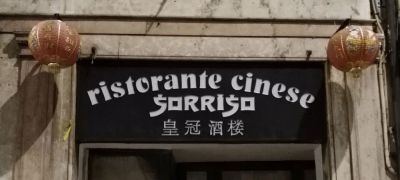Quella cinese rappresenta una delle comunità di immigrati più numerose in Italia e, probabilmente, la meno conosciuta. Per quanto riguarda la distribuzione territoriale, le province con più cittadini cinesi sono Milano, Firenze, Roma e Prato anche se quest’ultima si rivela di gran lunga la città con il più alto tasso di immigrati cinesi, pari al 39% della popolazione complessiva. Si tratta di una comunità tra le più vivaci per quanto riguarda il settore imprenditoriale, con un alto tasso di occupazione anche femminile.
When I first moved back to Italy over two years ago, I made an interesting discovery{mprestriction ids="*"}: there is at least one Chinese business in any village, town or city you may come across throughout La Bella Italia. In fact, Chinatowns all over the country are flourishing.
China is the second-largest economic power worldwide. In Italy, China’s economic presence focuses primarily on fashion, restaurants or commercial enterprises. The first wave of Chinese immigrants suffered and sacrificed the most; they left China for a new life on Italian grounds but often had to work multiple jobs of all sorts to make it. They saved in cash and not in bank accounts – although this has slowly changed over time. The second and third generations, by default, gracefully received the fruits of their labor.
Over the past few years, I have gotten to know many Chinese people in my hometown in Sicily. I’ve been curious about their cuisine, asked about family and cultural traditions and their language. As an international myself, I can relate and empathize with many feelings and experiences they come across. Although I’ve conducted research, I want to highlight that what you will read here are only my observations.
The Italian census reports that there are about 300,000 Chinese people in all of Italy, with the largest communities residing in Milan, followed by Prato and Florence in Tuscany and then Rome. Milan and Prato represent the largest communities not only in Italy, but in all of Europe. Thirty-one percent are reported as being Buddhists, 40 percent are Atheists and 10 percent are Christians. They have an established community represented by the Chinese Embassy in Rome, the Italian-Chinese Chamber of Commerce, a web of newspapers, and radio and TV programs. They often organize cultural events like Chinese New Year or Dragon Boat Festivals. I was told that Mandarin is the most widely spoken language among all the Italian communities while many others speak Cantonese.
Their presence in Italy and the rising positive presence of second and third generation Chinese-Italians in college (35%) is inevitably creating interest in the study of Mandarin among Italian students. More and more courses are being offered throughout the country. Coming from the U.S., I would naively try to converse with Chinese-Italians in English, soon learning they didn’t understand me. Obviously, they were born in Italy to Chinese parents – those being their two first native languages. Today, in fact, more and more Chinese-Italians are enrolling in English courses. We are also seeing an increase in Chinese-Japanese restaurants throughout the peninsula. While both cuisines are actually separate and distinct, here in Italy, they are often presented together. Personally, I love it because it adds a global touch to the Italian culinary scene. I miss the international and readily available culinary blends found throughout the U.S., so this allows me to intrigue my curious palate.
Many second and third generation Chinese-Italians have never been to China, keeping their culture alive within their bicultural homes and communities here in Italy. They use code-switching from Italian to Chinese and vice versa just like they enjoy noodles, wonton soup and incredible pizza margherita. They still predominantly marry within their culture, although 40 percent were reported as mixed marriages with Italians from the last Census. Younger generations receive Italian names or nicknames depending on the region and area where they live. I believe that belonging to two or more cultures is both a blessing and a curse. A blessing because it is an incredible richness to our own life and it enriches the lives of those around us, coloring the world with beauty, uniqueness and diversity. On the other hand, a curse because it will never be easy to walk in only one direction; we will always simultaneously know two paths. Practicing kindness towards ourselves and others in the process and finding the equilibrium that works for us is all it takes. “Nijao” and “Ciao!”
Francesca and her sister Giovanna are the owners of “Sicilian Sisters Travel,” an online travel boutique specializing in personalized journeys to Sicily and Italy. They invite you to visit their facebook page and website for more info. www.siciliansisterstravel.com
https://www.lagazzettaitaliana.com/travel/8685-nijao-italians#sigProIda0536bf938
{mprestriction ids="*"}




